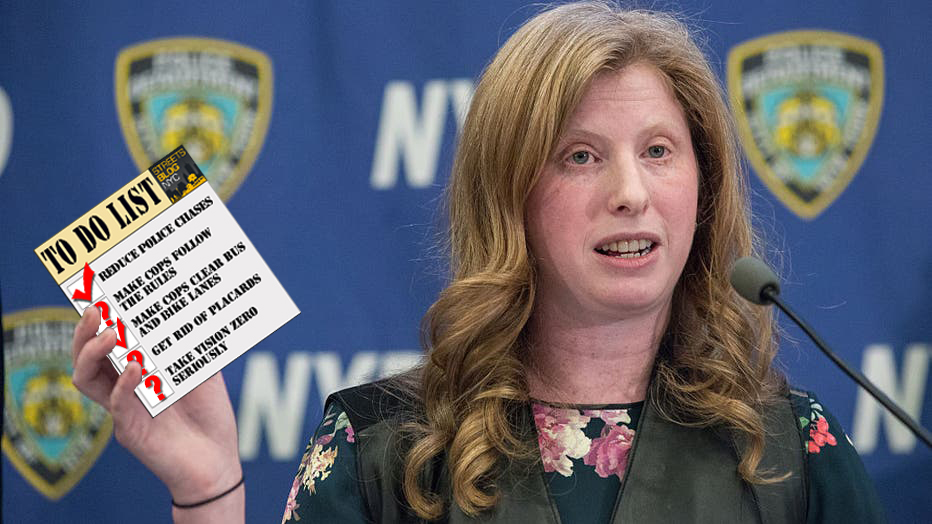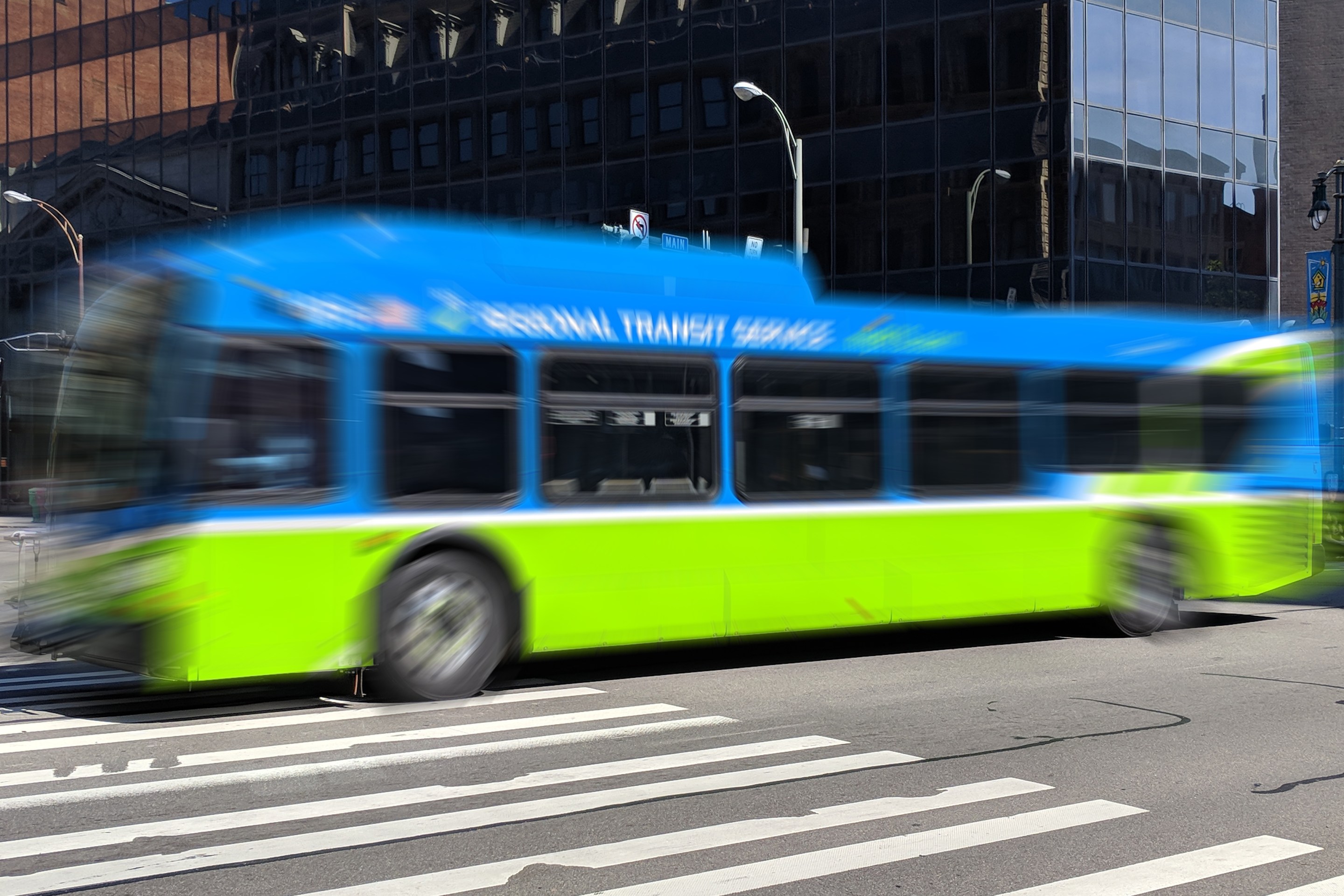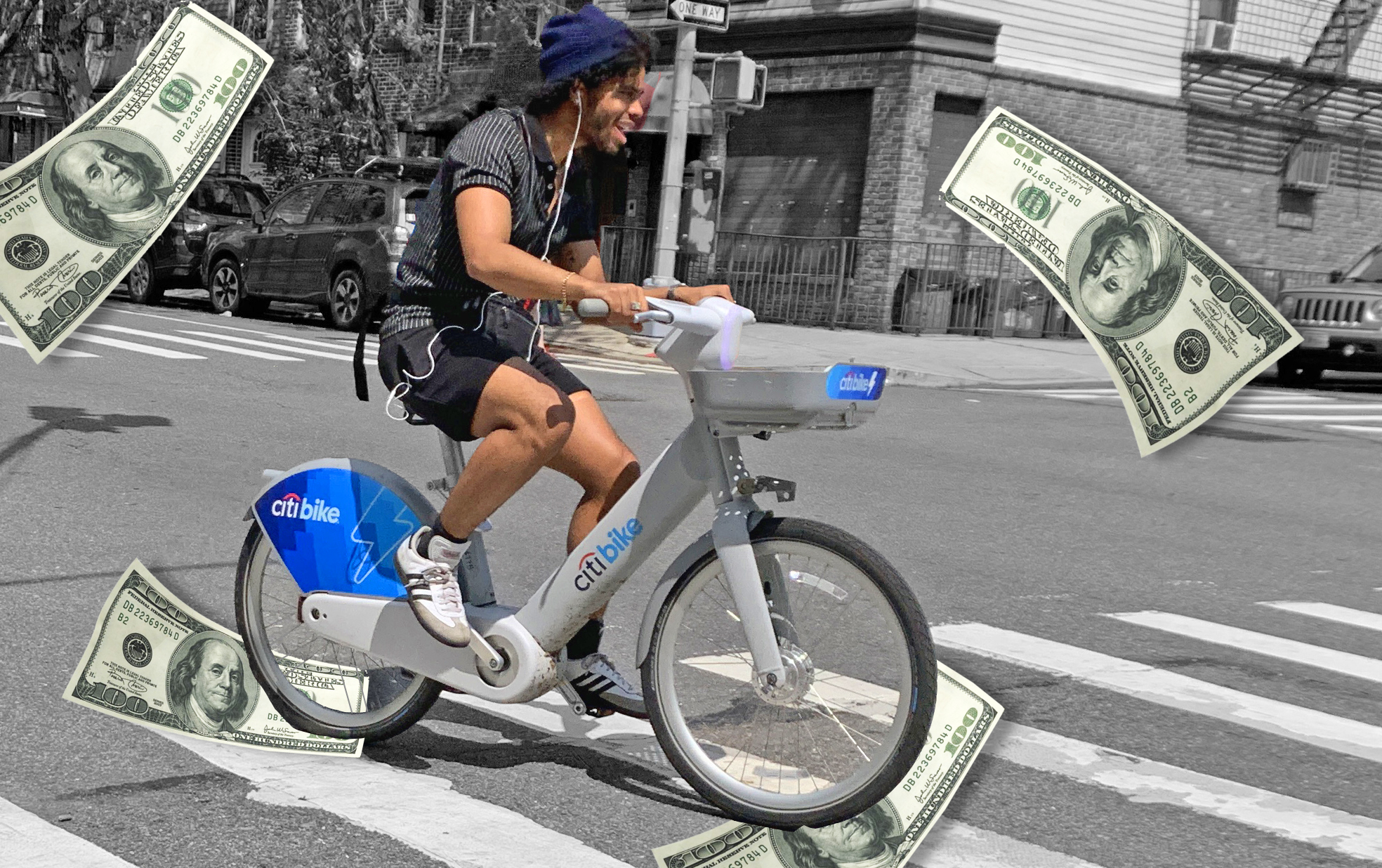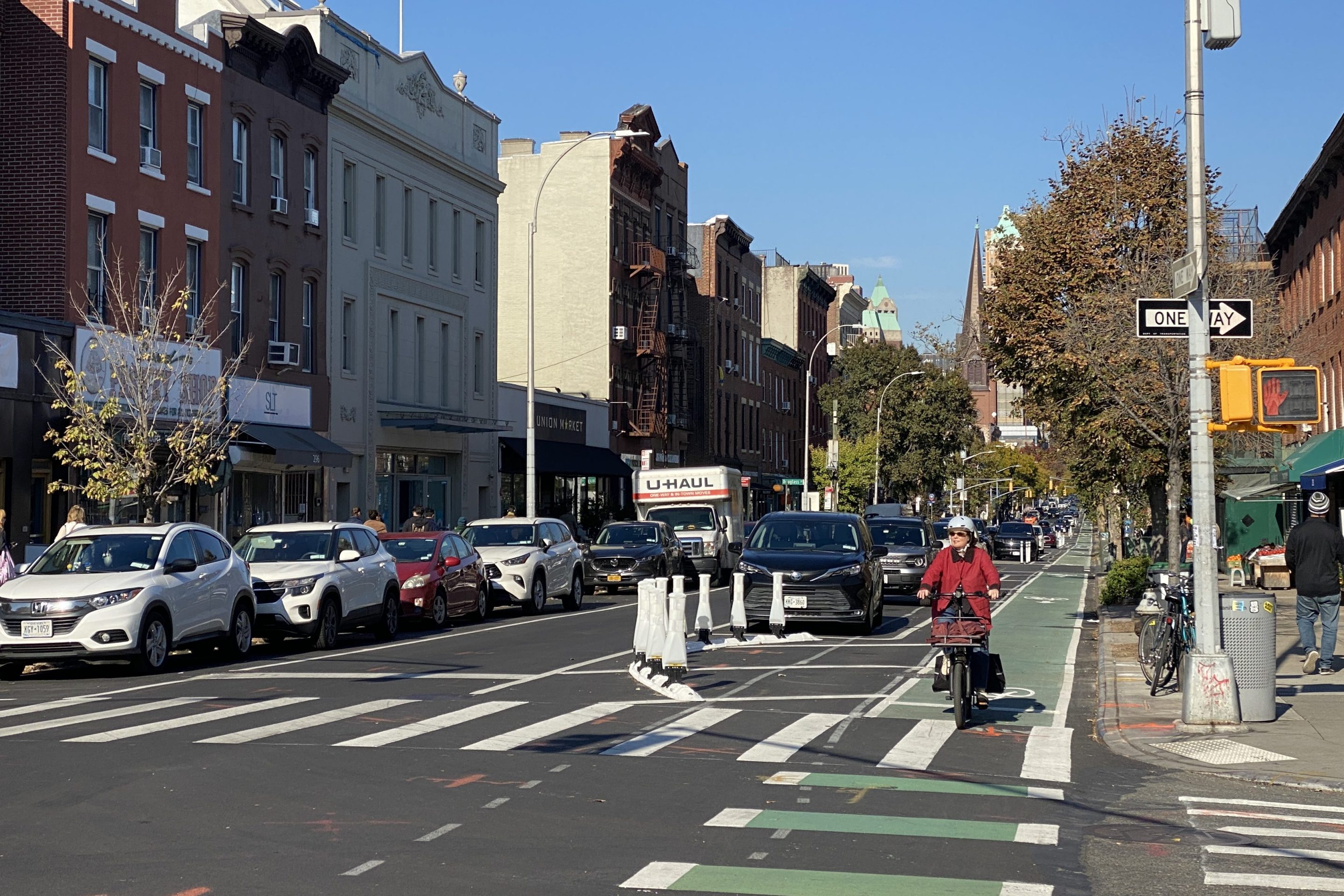America has a fat problem. You knew that, right? But it's not just the people who are fat. It's the roads.
That's the subject of a very insightful post from Streetsblog Network member Tom Vanderbilt, author of the book Traffic and keeper of the blog How We Drive. He makes the connection between the two kinds of fat -- on our bellies and on our streets and highways -- citing the work of Brian Wansink, an expert on consumer behavior and the human reaction to food who has made a particular study of ever-increasing portion size in the American diet:
Photo by circulating via Flickr.
Wansink suggests the larger the portion size, the less accurate the estimation of calories consumed becomes.
What does this have to do with the road? There is an interesting story in how the rise in portion size -- often associated (as Wansink notes) with fast-food restaurants -- historically tracks the huge
increase in miles traveled (183% growth in per-person miles from 1969 to 2000, a period in which the number of persons itself increased only 41%), which itself is associated with the rise of those same
restaurants; not to mention the much-debated work linking obesity to density and travel modes.But I had a different comparison in mind: The way the size of our roads affects our behavior in “consuming” them as drivers. This was brought home to me again in a recent video made by a group called Park Slope Neighbors,
which is working to reduce the size of streets like Brooklyn’s Prospect Park West (a five-lane thoroughfare, two lanes of which are dedicated to parking). As the video below shows, the speeds on the street are routinely in excess of the 30 MPH limit...One of the recommendations for Prospect Park West is to put it on a “road diet,” a deeply suggestive phrase in light of Wansink’s research. A separated bike lane would be a great place to start -- and would reduce the frequent cases of cyclists using the adjacent sidewalk. But something has to be done to change the context of the street. Underutilized by cars much of the time, it is an inefficient use of urban space, and its capaciousness sends a set of powerful signals to the driver, more powerful than whatever speed limit signs may be present. It represents, to paraphrase Wansink, “mindless speeding.”
People drive fast because it feels like they should. They see a wide road, and don’t give themselves much time to see anything else.
Vanderbilt argues that signs telling people to slow down, PSAs about the dangers of speeding and even police enforcement of speed limits can't do what road diets can. Just the way all the calorie-count posters in the world can't stop us from finishing a big bowl of ice cream when it's put in front of us. Check out this related post from St. Louis Urban Workshop. Interesting stuff.
Other interesting stuff from the network: Hub and Spokes is talking about "the fight of a generation" for transit advocates, EcoVelo links to a cool video showing the reasoning behind "Idaho stops" for bicycles, and Carfree USA links to a Wall Street Journal article that wonders if Americans are changing their gas-guzzling ways for good.





